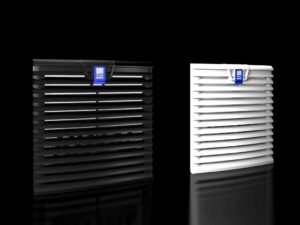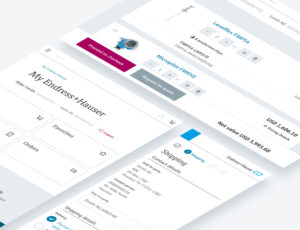Almost without exception, industrial environments are hostile spaces for electrical equipment; their components don’t react well to high levels of moisture, dust, and heat in the atmosphere. This sensitivity, in turn, affects plant efficiency and will ultimately lower output and profitability.
But moisture, dust and heat don’t need to be a concern provided you implement an effective climate control solution for your equipment.
The first step is to consider what constitutes suitable cooling to meet your needs, bearing in mind that your cooling needs may alter with any future changes to applications within your facility.
It’s common for managers, when choosing a cooling solution, to default to air cooling using fans and filters because it’s familiar.
While air cooling can be a viable solution, it also has its limitations which must be understood before it’s installed, otherwise you risk creating further problems further down the line. Karl Lycett, Rittal UK’s Product Manager for Climate Control, investigates…
Air Cooling
Air cooling is relatively self-explanatory. The cooling is achieved by passing cooler, outside air across the enclosure’s warmer internal components. However, this simplicity has its shortcomings which should be kept in mind.
If at any point the temperature within the facility exceeds the maximum allowable temperature (setpoint) inside of the enclosure, then no cooling will be possible. A good example of this is during the height of summer when the combination of lots of machinery and high ambient temperatures can cause severe temperature spikes within the factory. These will quickly lead to overheating componentry and unexpected tripping of critical equipment. But this is only an issue if your factory is prone to surges in temperature. For many organisations, there is an acceptable level of general HVAC installed to ‘take the edge’ off the temperature, allowing air cooling to create a protective environment for the equipment within the enclosures.
Dust is a constant irritant within a factory and realistically it can never be fully removed. Even ‘cleanest’ industrial space will have a base level of detritus within the air which will then be drawn into enclosures if fans are employed. Unfortunately, this dust can get into wire connections or internal component fans and cause havoc over time, either preventing thermal exchange or blocking up and shorting wiring connections.
The best way to prevent dust issues arising is to add a suitable filter medium to your air cooling. Filter mediums (or mats) ‘catch’ particulates before they enter the enclosure. The mats should be replaced on a regular basis to prevent a build-up of dirt which can then ‘choke’ the fan, preventing it from pulling sufficient cooling air into the enclosure.
Liquid Cooling
As mentioned earlier, it’s common to find traditional air-cooling methods are unviable or simply not especially effective in industrial spaces. This can be due to factors such as the location or amount of the equipment involved, or it can be down to physical space restrictions,
Liquid cooling, however, is an option open to all, and one that is much more effective than air at removing waste heat and reducing the temperature within the enclosure.
Liquid cooling, as the name suggests, uses chilled water to perform the cooling of the enclosure. An ‘Air to Air Heat Exchanger’ is mounted on the enclosure and connected to an industrial chiller. The chiller cools down heated water from the enclosure to a reasonable temperature before delivering it back to the heat exchanger.
The beauty of liquid cooling is that it is ‘active’ which means that you can make the internal temperature lower than that of the local environment. So even in the height of summer, with the factory in full swing, your electrical equipment will be protected. Many industrial sites already have an operational chilled water supply to service other procedures and equipment. Where this is the case, it can be tapped off and used for enclosure cooling.
Liquid cooling requires hydraulic hoses (cold water in, hot water out) to be connected between the heat exchanger and the chiller. It’s therefore worth giving prior thought to both the enclosure placement and where to run the hoses to ensure the smooth commissioning and operation of the whole system.
Much like the air cooling, regular maintenance of the system is strongly recommended to ensure the cooling equipment can provide years of uninterrupted service.
In summary, both solutions are valid in the right scenario. However, choosing a cooling solution without first considering its operating environment is setting yourself up for less than perfect result. This in turn will have an impact on the overall effectiveness of your chosen cooling solution and the ongoing protection of your critical electrical equipment.
Further information at www.rittal.co.uk.

 Instrumentation Monthly Test | Measurement | Control
Instrumentation Monthly Test | Measurement | Control










